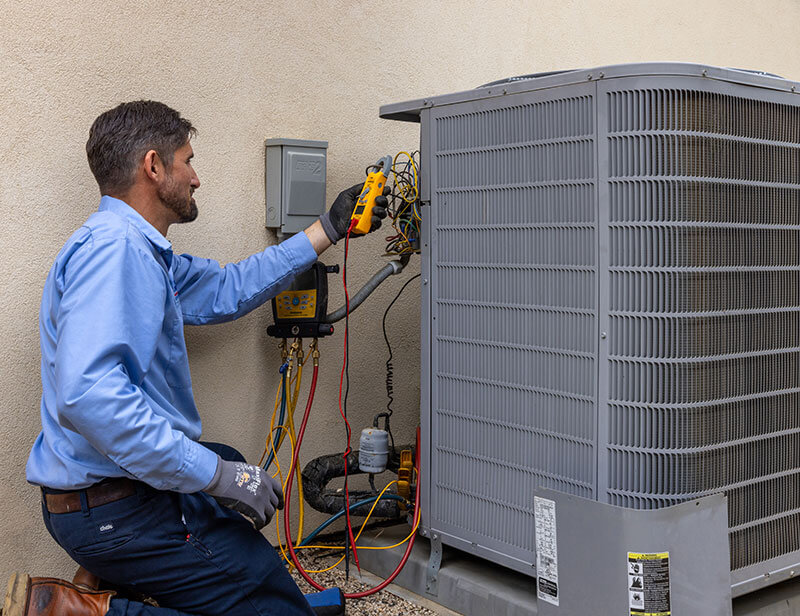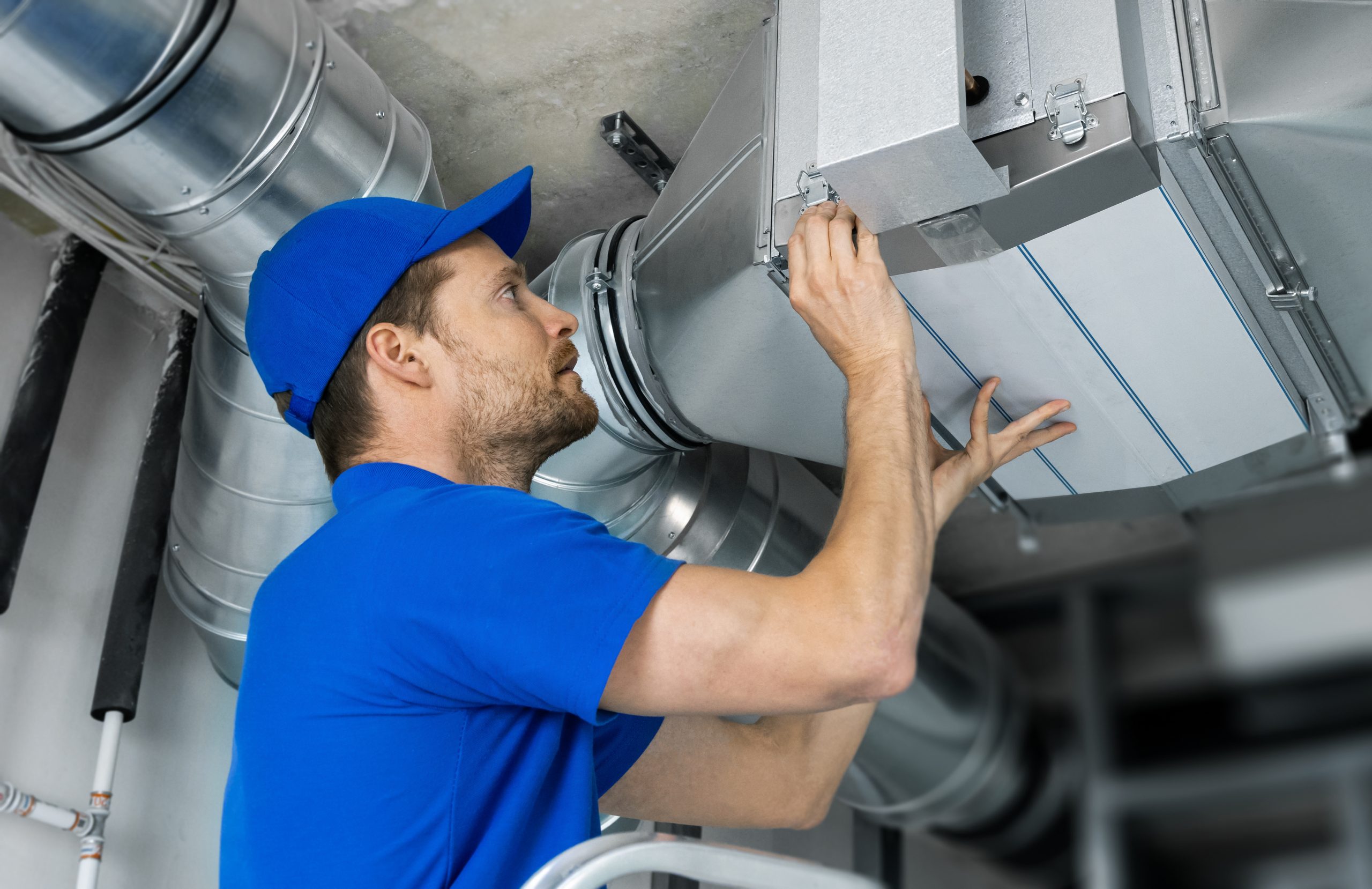Just How a Heatpump and Heating System Work With Each Other to Enhance Your Home's Home heating Performance
Recognizing exactly how a warm pump and heating system collaborate is important for homeowners looking for efficient heating remedies. Each system has its strengths, offering a well balanced technique to home comfort. The heatpump succeeds in moderate temperature levels, while the heating system supplies fast warmth during severe cold. This harmony not just minimizes power prices yet also enhances the lifespan of both appliances. What variables influence this cooperation, and exactly how can home owners maximize their advantages?
Comprehending Warmth Pumps: How They Function
Lots of individuals may be unknown with their inner operations, heat pumps play an important role in contemporary home heating systems. These devices operate by transferring warm from one area to another, using the concepts of thermodynamics. In chillier months, a heatpump removes heat from the outdoors air, ground, or water, and transfers it indoors to warm the home. On the other hand, during warmer months, it can reverse the procedure, working as an air conditioner by eliminating warm from inside to the outside.Heat pumps contain an evaporator, condenser, growth, and compressor shutoff. The refrigerant within the system soaks up heat as it evaporates at low temperatures and stress. The compressor after that raises the stress and temperature of the refrigerant, allowing it to launch warm as it condenses. This effective procedure can substantially minimize energy usage contrasted to typical heating approaches, making warmth pumps a lasting option for environment control in homes.
The Function of Heating Systems in Home Heating
Furnaces play an essential function in home heating by offering a reliable source of heat throughout the colder months. They operate by producing warmth via burning or electrical resistance, distributing it throughout the home through air ducts or glowing systems. The effectiveness of a heating system is commonly gauged by its Annual Fuel Utilization Performance (AFUE) ranking, which shows exactly how efficiently the system transforms fuel into heat.Furnaces can utilize numerous power resources, including gas, oil, gas, or power, permitting house owners to choose one of the most ideal alternative for their requirements. Unlike heatpump, which may struggle in severe chilly, heating systems preserve regular efficiency, guaranteeing that interior temperatures remain comfy no matter exterior problems. In addition, modern furnaces usually come outfitted with advanced technology, such as clever thermostats and variable-speed blowers, enhancing their efficiency and responsiveness. This versatility makes heating systems a critical element in all-encompassing home heating approaches.

Benefits of Using Both Systems With Each Other
Combining the staminas of both furnaces and heatpump can lead to an extra reliable and effective home heating service. Making use of both systems permits homeowners to take advantage of the heatpump's power effectiveness throughout milder temperatures while relying upon the furnace for even more severe cold problems. This twin approach can considerably reduce energy prices, as heat pumps eat much less power than conventional heating approaches when temperature levels are moderate.Additionally, using both systems together can boost convenience degrees in the home. Heatpump can provide constant, also home heating, while heaters can promptly raise ambient temperature levels when required. The assimilation of both systems can extend the life expectancy of equipment by decreasing wear and tear on each device, as they share the workload. Inevitably, house owners can delight in a well balanced, cost-efficient home heating remedy that adjusts perfectly to varying weather condition conditions, making certain a cozy and inviting home throughout the winter season.
Just How Warmth Pumps and Furnaces Complement Each Various Other
When home owners incorporate warmth pumps and furnaces, they create a corresponding heating unit that maximizes efficiency and comfort. Heat pumps run by transferring warm from the outdoors air or ground, making them extremely reliable in moderate climates. They stand out throughout milder temperatures, supplying affordable home heating. On the other hand, heating systems generate warm through burning or electric resistance, delivering solid, instant heat during severe cold conditions.The combination of these two systems permits dynamic modifications based upon temperature changes. Throughout warmer months or milder winter months days, the warmth pump can take the lead, preserving energy and decreasing expenses. As temperatures decline, the heater can flawlessly involve, guaranteeing constant warmth throughout the home. This harmony not only enhances power usage but also boosts the life-span of both systems, as each system operates within its suitable efficiency array. With each other, they develop a balanced environment that adapts to differing environment needs.
Optimizing Effectiveness: Tips for Homeowners
Homeowners can enhance their heating efficiency through numerous useful approaches. Developing a routine upkeep schedule, incorporating clever thermostat technology, and applying efficient insulation and securing remedies are key actions. These measures not only enhance comfort but also decrease power expenses.
Routine Upkeep Set Up
To guarantee optimal heating effectiveness, developing a regular maintenance routine is vital for any type of home. Homeowners should prioritize routine evaluations of both heat pumps and heaters to identify peak efficiency. This consists of altering air filters each to three months, as blocked filters can greatly minimize efficiency. In addition, organizing expert upkeep at least once a year enables service technicians to recognize and resolve potential problems prior to they escalate. Property owners need to likewise clean the warm pump's exterior device to stop particles build-up that can impede air flow. By sticking to a regular upkeep timetable, house owners not just improve their heating unit' effectiveness but additionally extend their lifespan, leading to greater comfort and lowered power costs throughout the cooler months.
Smart Thermostat Assimilation
Incorporating a wise thermostat right into a home heating unit can considerably enhance energy effectiveness, particularly as it permits precise control over temperature settings. These gadgets can discover the house owner's timetable and preferences, instantly readjusting the temperature level to enhance comfort while decreasing power usage. For instance, they can reduce home heating throughout times when the home is empty, reducing unnecessary intake. Numerous smart thermostats likewise offer real-time energy use information, my sources enabling home owners to make informed decisions about their home heating practices. In addition, remote gain access to through mobile phone applications allows users to adjust setups from anywhere, making certain the home is warm upon return. Overall, smart thermostat assimilation not just enhances comfort yet significantly adds to power financial savings and performance.
Insulation and Securing Solutions
Smart thermostats play a vital role in power effectiveness, however their effectiveness can be significantly boosted by correct insulation and securing services. Property owners need to focus on shielding attic rooms, wall surfaces, and floors to lessen warmth loss. Top notch insulation products, such as spray foam or fiberglass, can greatly boost thermal resistance. Furthermore, securing spaces around ducts, windows, and doors stops chilly air seepage and warmth escape. Weatherstripping and caulking work methods for resolving these leaks - ductless mini splits. Routine evaluations for air leaks, along with using blower door examinations, can view publisher site aid identify problem areas. By buying insulation and sealing, home owners can maximize the efficiency of their heating unit, ultimately causing minimized power intake and lower energy expenses
Typical Misconceptions Regarding Heat Pumps and Furnaces
What mistaken beliefs border heat pumps and furnaces? Numerous people wrongly think that warmth pumps are inefficient in cooler environments. In truth, modern-day heat pumps are designed to run successfully also in low temperature levels, supplying dependable heating throughout winter months. One more typical misconception is that heating systems are always extra reliable than heatpump. This depends on the certain energy resources and efficiency ratings of the devices in concern. Some may also think that making use of both systems at the same time is unneeded, yet as a matter of fact, this mix can maximize heating efficiency, especially during extreme climate condition. Additionally, individuals usually presume that warmth pumps require consistent maintenance, when truthfully, they have similar maintenance needs to traditional heater. By exposing these misconceptions, homeowners can make more informed decisions regarding their heating choices, eventually bring about boosted convenience and energy effectiveness in their homes.
Upkeep Factors To Consider for Combined Solutions

Often Asked Inquiries
Can Warm Pumps Work Properly in Incredibly Cold Climates?
Heat pumps can battle in extremely cold environments due to decreased effectiveness and warmth removal limitations. Innovations in modern technology have actually led to versions created for far better performance in such conditions, enhancing their stability in severe atmospheres.
How Much Time Do Heat Pumps and Furnaces Usually Last?
Heat pumps normally last 15 to two decades, while heating systems have a life-span of 15 to thirty years. Routine maintenance can prolong their long life, ensuring effective procedure and lowering the need for premature substitutes.

What Is the Ordinary Price of Setting Up Both Solutions?
The ordinary cost of installing both a heat pump and a heater normally varies between $5,000 to $10,000 - ductless mini splits. Variables affecting this expense consist of system size, setup complexity, and local labor prices
Exist Tax Obligation Rewards for Making Use Of Energy-Efficient Home Heating Equipments?
Many homeowners ask about tax motivations for energy-efficient home heating systems. Different federal and state programs usually use refunds or credit reports, encouraging the adoption of sustainable innovations to decrease power usage and promote environmental responsibility.
Exactly how Do I Select the Right Dimension Heatpump and Heater?
Choosing the right dimension warmth pump and heater entails calculating the home's square footage, taking into consideration insulation quality, and assessing regional climate. Consulting an expert can guarantee ideal system efficiency and power effectiveness based on details demands. heat pump service. Comprehending just how a heat pump and furnace work with each other is crucial for homeowners looking for effective heating services. In colder months, a heat pump essences warm from the outside air, ground, or water, and transfers it inside to warm up the living area. When property owners incorporate warm pumps and heating systems, they create a corresponding heating system that makes the most of efficiency and comfort. Heat pumps operate by moving heat from the outdoors air or ground, making them very reliable in moderate climates. Heat pumps can struggle in exceptionally chilly environments due to minimized efficiency and warm removal constraints